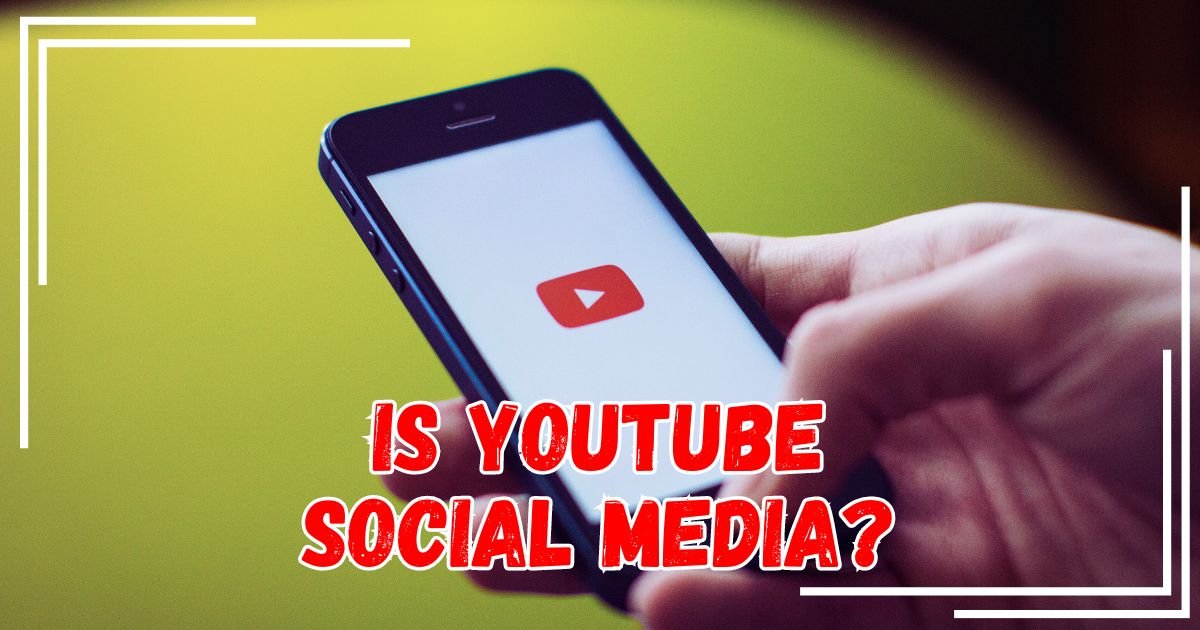Is YouTube Social Media?
Yes, YouTube is a social media platform. In 2025, it plays a huge role online. Many people think it is just for watching videos. But YouTube is more than that today. It lets people connect, share, and interact. That’s what makes it social. You can leave comments and press the like button. You can also follow channels and share videos. These features are all part of social media. If you are asking “what is YouTube?”, the answer is simple. It is a place to post, watch, and talk. This article will explain how it works. You’ll also learn why it fits the social platform label.
What Makes a Platform “Social Media”?
Social media means places where people interact online. These platforms let users talk, share, and follow each other. You can like, comment, and repost things you enjoy. Social media also helps people build networks and friendships. Some examples are Facebook, Instagram, TikTok, and Twitter (X). All of them let users post and reply. This creates online conversations and communities. A social media platform connects people in real-time. It allows free sharing and public feedback. These are key parts of a social network. That’s why platforms with likes and comments are called social. They turn simple posts into shared experiences. YouTube does the same, so it counts too.
YouTube Basics – What Does It Really Do?
YouTube is a site where people share videos. Users upload content that others can watch and enjoy. Anyone can search for fun, music, news, or learning. You can also watch without signing in. But if you log in, more tools open up. You can like, comment, or hit the subscribe button. This helps you follow your favorite channels. YouTube also recommends videos based on your views. It shows what’s popular and what’s trending now. You can post videos and become a creator. Some even earn money from their content. This makes YouTube a full video sharing platform. It’s not just for fun—it’s also a tool for connection.
Does YouTube Allow Social Interaction?
Yes, YouTube lets users interact in many ways. You can leave comments under videos you watch. Viewers also press like or dislike buttons to react. People often reply to each other’s comments too. This helps start fun and friendly conversations. Creators can talk with fans using the comment section. This builds trust and keeps people coming back. Sharing is another big part of YouTube communication. You can send videos to your friends anytime. Users also make playlists to share with others. This turns watching videos into a shared activity. These features show that YouTube supports real interaction. It’s not just for watching—it’s for connecting. The content comes from users, not just companies. This user-generated content builds strong social spaces. YouTube interaction is active, not passive, and that matters. People connect through likes, comments, shares, and replies. That’s why many now see YouTube as a social media platform.
How Is YouTube Different From Other Social Media?
YouTube is not exactly like Facebook or TikTok. On Facebook, people share photos, status, and life updates. TikTok focuses on fast, short, fun videos and trends. Instagram is all about pictures and short videos too. But YouTube is built around longer videos and deep topics. It has full tutorials, reviews, and live streams too. YouTube feeds are based on what you like watching. Other social apps show random viral content to everyone. YouTube gives you more control over your feed. You subscribe to channels you enjoy and trust. This makes YouTube feel more personal and focused. Another big difference is the search tool. YouTube’s search is powerful and works like Google. It helps you find videos about any topic fast. That makes YouTube part social, part learning tool. So if you ask “is YouTube like Facebook?”—not really. It has its own way of sharing and connecting. YouTube is a mix of video sharing and real community.
Building Community on YouTube
YouTube has strong online communities built by creators and fans. A “YouTube community” is more than just comments. It’s made of people who enjoy the same content. Fans follow creators they like and trust. They join livestreams and leave supportive messages. Creators post updates, photos, and polls in community tabs. These tools help fans feel close to the creator. Some fans even help creators by sharing their content. This builds loyalty and keeps channels growing fast. People also form groups around shared interests or hobbies. These groups might talk about gaming, art, or cooking. That’s how social connections on YouTube begin. YouTube also lets creators post questions for fans. Polls and chats keep everyone active and involved. This is how YouTube builds a strong digital community. It’s more than watching—it’s being part of something. This is why many call YouTube a social platform. It brings people together using videos and shared ideas.
How YouTube Helps Businesses and Brands
YouTube helps businesses grow faster in today’s digital world. Many brands use YouTube for business to share what they do. This includes product videos, how-to guides, and behind-the-scenes content. Brands often work with YouTube creators for marketing. These creators already have big followers and trusted voices. When they talk about a brand, people listen. This kind of partnership is called influencer marketing. It works better than regular ads because it feels real. YouTube also lets companies run video ads before or during videos. These ads can target people by age, location, and interests. That means a business can reach the right viewers. Even small businesses use YouTube marketing to get attention. They don’t need big money to make it work. A simple video can go viral and bring customers. This is why YouTube is a top tool for brand success. It’s not just a place for fun videos. It’s now a platform where businesses connect with customers, promote products, and grow fast. YouTube makes business marketing easy, powerful, and affordable.
What Are YouTube’s Most Social Features?
YouTube is not just for watching videos anymore. It now has many features that feel like social media. YouTube Shorts are one of the most popular tools. They let people make quick, fun videos, just like TikTok. These videos are easy to share and often go viral. Another popular feature is live streaming. It lets creators talk to their fans in real time. People can watch, comment, and send live reactions. The chat feature makes it feel like a group hangout. There’s also a Community tab on most channels. Creators use it to post updates, polls, pictures, and messages. Fans can reply, like, and join conversations. It works like a mini social network within YouTube. YouTube Stories also add a fun twist. They are short clips that disappear after 24 hours, just like Instagram Stories. These tools show that YouTube is more than a video site. It’s a place where people talk, share, and connect every day. With these social tools, YouTube is clearly a social media platform.
Global Views: Do Experts Call It Social Media?
Experts, researchers, and tech leaders now agree—YouTube is social media. In 2025, many reports confirmed this fact. YouTube lets people post, comment, share, and follow. These are key parts of what makes a site “social.” Governments have also noticed this shift. For example, Australia added new policies in 2025 for youth content. These rules treat YouTube just like Instagram and TikTok. That means YouTube is now seen as a real social platform by law. Tech news writers also support this view. They point to user stats that prove YouTube is active and growing. Over 2 billion users log in each month. Most of them don’t just watch—they like, comment, and engage. This level of activity shows real social behavior. People also build communities on YouTube. They follow creators, join live chats, and share feedback. So while YouTube started as a video site, it has changed. Today, experts say it’s fully social media. It blends video, community, and connection in one powerful platform.
Final Answer – Is YouTube Social Media?
Yes, YouTube is a social media platform today. It lets people share videos, comment, and connect. You can follow creators and chat during live videos. YouTube also has Shorts, Stories, and Community posts. These features act just like Facebook or Instagram. People use it to express ideas and start conversations. It’s not just for watching videos anymore. Today, YouTube is where people build real online groups. Millions talk, share, and react every day. The app has all the tools of a modern social network. So, the final answer is simple and clear—YouTube is social media. If you’re asking, “Is YouTube a social platform?” The answer is yes, 100%. It’s a space for content, sharing, and social connection. From big brands to solo creators, everyone uses it socially. That’s what makes YouTube a full social media app in 2025.
FAQs About YouTube and Social Media
Is YouTube the same as TikTok or Instagram?
No, but it’s very close now. YouTube Shorts look like TikToks. Stories and community tabs feel like Instagram. They are all used to post, follow, and talk.
Why do some people not see YouTube as social media?
Some think it’s just for watching videos. But that’s old thinking. Today, YouTube has comments, chats, and live talks. It’s now used for real social engagement.
Can I build a following on YouTube?
Yes, many people grow big followings here. Just post videos often and talk with viewers. YouTube helps you reach people who like your content.
What makes YouTube more social in 2025?
New tools like Shorts, Stories, and live chats help a lot. These make YouTube feel like a social app. More people now comment, follow, and join communities.
Do YouTube comments make it social?
Yes, comments are a big reason YouTube is social. People reply, ask questions, and share ideas. It helps creators and fans talk like friends.
About the Author – Evelyn White
Evelyn White is a skilled content writer with heart and style. She writes about lifestyle, trends, and online culture. Her goal is to help readers learn in simple ways. Evelyn loves turning hard topics into easy stories. With years of writing online, she knows how to earn trust. Her work always puts readers first. She believes learning should feel fun and clear. Evelyn’s voice is kind, helpful, and honest. She makes digital topics easy to understand, even for kids. Her mission is simple: write clearly and help people. That’s why her writing connects with so many readers.

Evelyn White is an experienced content writer with a background in lifestyle, trends, and practical advice. With several years of writing across digital platforms, she specializes in making everyday topics accessible, informative, and engaging. Her goal is to deliver trustworthy, reader-focused content that’s both useful and easy to understand.
Discover more from Try Hard Guides
Subscribe to get the latest posts sent to your email.

